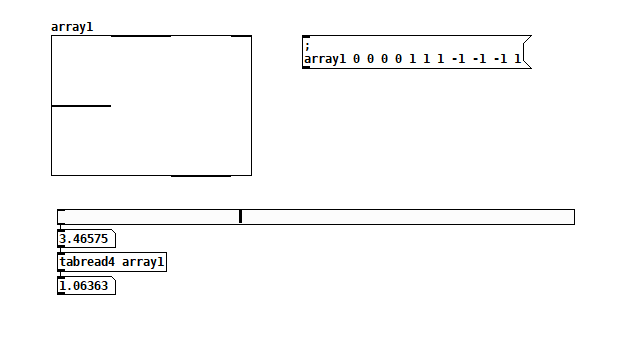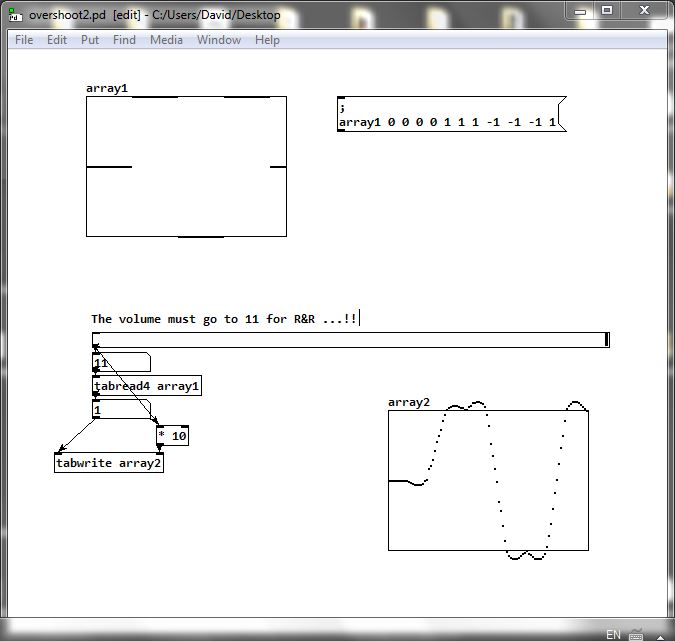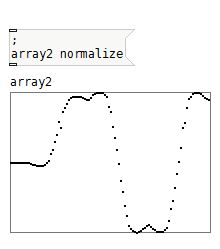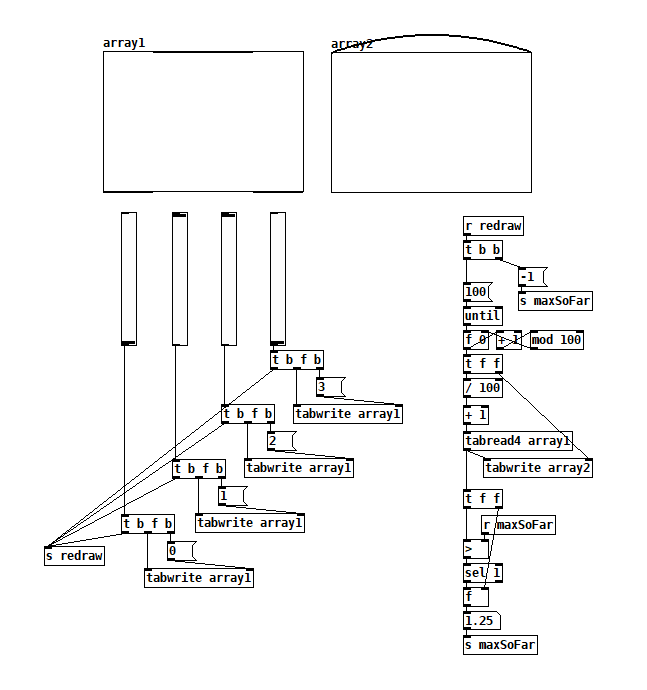This is really a math problem, but I noticed that with some volume-maximized pop music, using 4 point polynomial interpolation to implement varispeed can increase the peaks and cause clipping.
Here's a control rate demonstration: overshoot.pd

Is there a theoretical or practical limit to this kind of peak increase?
-
4 point interpolation increases peaks, but by how much?
-
@jameslo I think what you have is "ringing" because of the very sharp changes. Your test must be the worse case scenario......... https://en.wikipedia.org/wiki/Ringing_artifacts
You can see it if you plot the output.

For a sine wave there should be no overshoot and for a complex signal not as much as you have in your test.
A [/~ 1.13] should fix it if I am right.
David. -
@whale-av I'm not sure that ringing is relevant or helps quantify the issue, but I support all efforts to keep Spinal Tap relevant in international discourse.

I found this explanation of 4 point interpolation helpful: interpolation.pdf .
It's kind of surprising how straightforward it is to construct a 3rd degree polynomial that hits all 4 points, and useful to know that the resulting polynomial is only for interpolating the interval x2..x3. That explains why tabread4-help says "Indices should range from 1 to (size-2) so that the 4-point interpolation is meaningful", e.g. if you have a 4 point table, you can only interpolate between indices 1 and 2 (the 2nd and 3rd table value). That in turn implies that I only need to characterize the overshoot produced by any given vector of 4 consecutive samples because everything before and after doesn't matter. You can see it in @whale-av's plot--those sharp points at some of the integer indices as the algorithm switches abruptly from one polynomial to another.In a cursory search of the web I can find tutorials on how to find the local minima and maxima of a given 3rd degree polynomial, but not a family of them (varying over all yn). I think this means I need multivariable calculus to answer my question analytically.
 Which in turn means it's probably not happening.
Which in turn means it's probably not happening. -
@jameslo You are not normally known for giving up....!!
However, I am unsurprised...... it is a problem for medical, geological, climate, space travel and other engineers...... and even mathematicians........ https://math.stackexchange.com/questions/450328/what-is-the-maximum-overshoot-of-interpolating-splines-in-d-dimensions (no solution in nearly 9 years).And then I remembered that Pd is much better at solving such problems than any of those "scientists"
 .......
.......
(for our very limited use)
David.
Glory to Splinal Tap

-
It smells like 1.25 is the limit: graph overshoot.pd


